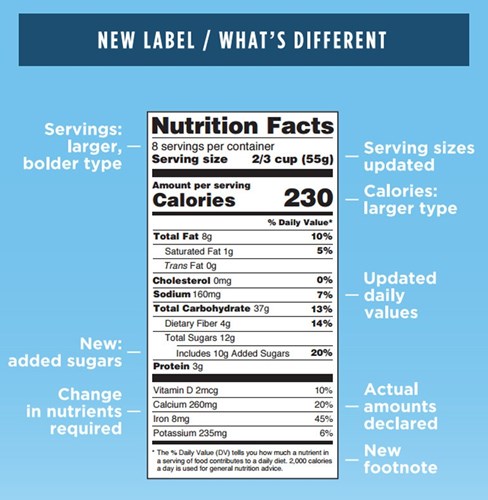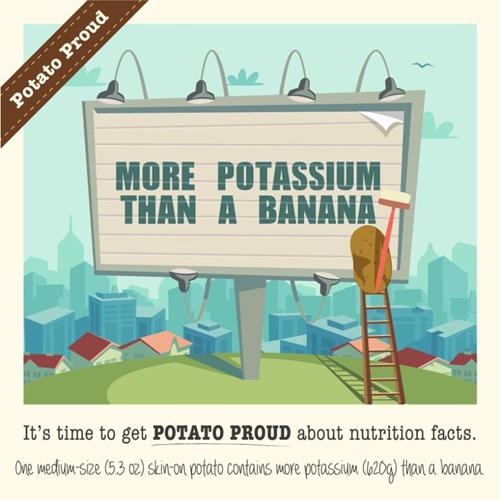Labeling Requirements Underscore Red Benefits
Just days ago on May 20, the FDA announced the new Nutrition Facts label for packaged foods. The new label is being updated to reflect new scientific information, including the link between diet and chronic diseases such as obesity and heart disease, and is intended to make it easier for consumers to make better informed food choices. One notable change to the new label is the requirement for identifying potassium along with other essential nutrients a food contains, and declaring the actual amount that a serving contains of these nutrients in addition to percent Daily Value.

Potassium was included in the new Nutrition Facts label because – according to the 2015 Dietary Guidelines – diets containing foods that are a good source of potassium and low in sodium may reduce the risk of high blood pressure and stroke. Potassium plays critical roles in muscle function, cardiac function, and regulation of blood pressure, and if deficient in the diet adversely affects numerous organ systems including the musculoskeletal, renal, and cardiovascular systems. Yet less than 2% of American adults currently consume the Daily Value of potassium recommended by the Institute of Medicine's Food and Nutrition Board.
The adequate intake of potassium as established by the Food and Nutrition Board is 4,700 mg per day for males and females over the age of 14. The good news is that it’s easy to get more potassium in your diet – just enjoy healthy and delicious red potatoes more often! Many people are surprised to learn that potatoes have more potassium than bananas, spinach, or even broccoli – 620 mg for a 5.3 oz. potato with the skin on, or 18% of the recommended Daily Value.
|
Produce Item |
Potassium (mg) |
|
Potato (1, 5.3 oz) |
620 |
|
Banana (1 med) |
400 |
|
Mushrooms (5 med) |
300 |
|
Brussels Sprouts (4 large) |
290 |
|
Cantaloupe (1/4 med) |
280 |
|
Orange (1 med) |
260 |
|
Grapefruit (1/2 med) |
220 |
|
Spinach (1½ c raw) |
130 |
And even better, red potatoes are one of the most affordable sources of dietary potassium! Dr. Adam Drewnowski and his colleagues from the University of Washington merged nutrient composition data from the USDA Food and Nutrition Database for Dietary Studies with the USDA Center for Nutrition Policy and Promotion national food prices database. His study demonstrated that potatoes are one of the best nutritional values in the produce department, providing significantly better nutritional value per dollar than most other raw vegetables, and that potatoes per serving were the largest and most affordable source of potassium of any vegetable or fruit.
So you can feel good – not guilty – about enjoying red potatoes all year long! They are unmatched in summertime potato salads or on the grill, and have no equal roasted or in soups and stews during the colder months of the year. For some great red potato ideas to get you started, we have a ton right here!



Share